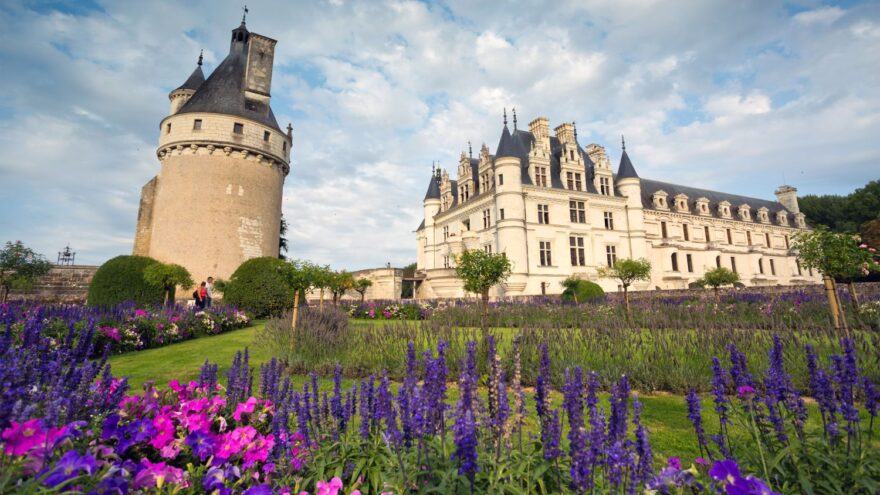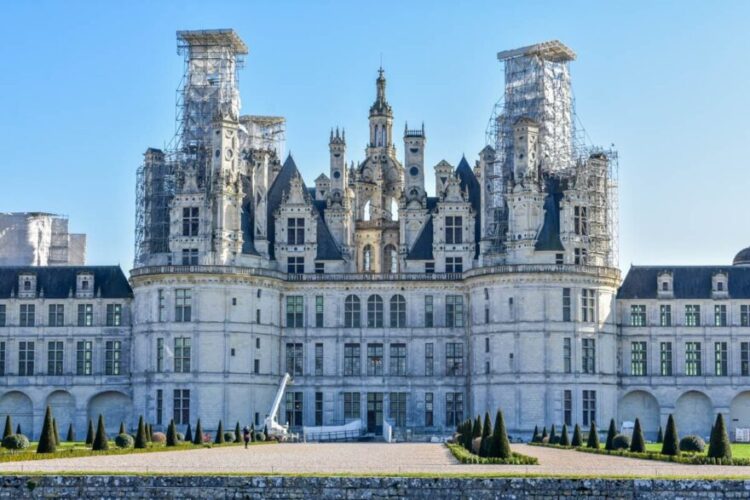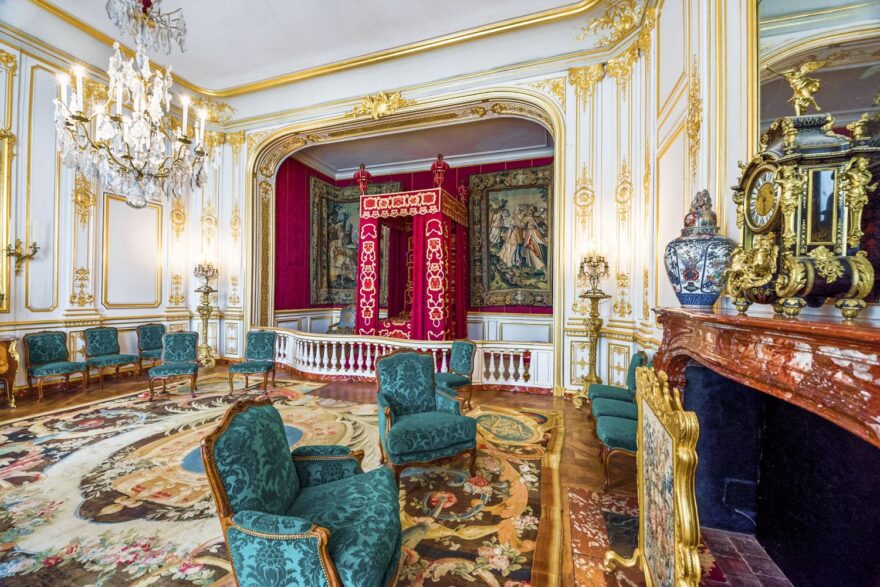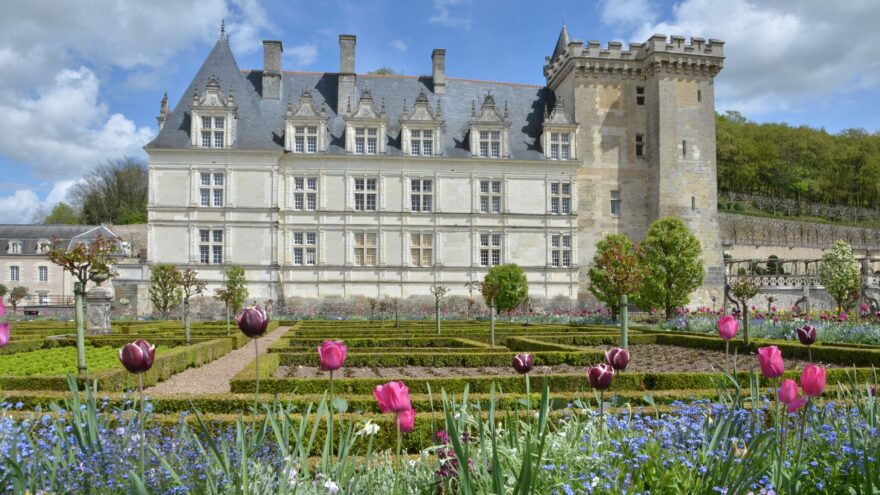Château de Chambord in the Loire Valley: Travel Guide and History

As you embark on a journey through the bucolic Loire Valley, nestled within the rolling vineyards and tranquil landscapes lies the magnificent Château de Chambord. A testament to the grandeur of French Renaissance architecture, it stands as an extraordinary symbol of royal power and architectural innovation. In the following sections, we dive into the fascinating history, impressive architecture, and abundant beauty of this captivating château, while providing insightful tips for a memorable visit.
Location and Getting There
Ensconced in the heart of the Loire Valley, the Château de Chambord sits approximately two hours south of Paris. This prime location places it within easy reach of France’s capital, as well as other charming towns in the region, such as Blois and Tours.
The easiest approach is via the A10 highway, with signage directing visitors to the estate. A less expedient but more picturesque route involves meandering through the scenic vineyards and rural landscapes, the Loire Valley Tour is a prime example of the serene French countryside.
Aside from personal vehicles, public transportation options are available for those seeking an alternate means of getting there. Trains from Paris to Blois, the nearest sizable town, run frequently. Upon reaching Blois, the Château is just a short bus or taxi ride away.
Cycling is another appealing option, given the area’s well-maintained network of cycle paths. This leisurely mode of transport allows for delightful detours and affords the chance to fully appreciate the surrounding landscapes.
The History of Château de Chambord

Delving into Chambord’s past, one is instantly transported to a time of lavish courts and royal intrigue. Commissioned by King Francis I in 1519 as a hunting lodge, the Château’s construction spanned nearly three decades. Interestingly, despite its grandeur, the monarch spent a mere seven weeks there in total, a testament to its intended use as a display of wealth and power rather than a residential dwelling.
Over centuries, the Château has weathered wars, neglect, and restoration efforts, each chapter adding to its rich tapestry of history.
The architecture of Château de Chambord betrays hints of Italian influence, presumably from Leonardo da Vinci who was, at that time, under the patronage of Francis I. However, the architect’s identity remains shrouded in mystery.
The Château has seen numerous proprietors over the centuries, from royal families to the French government, each leaving their unique imprint. Since the mid-20th century, Chambord has been recognized as a national treasure and receives protection as a UNESCO World Heritage site, ensuring its preservation for future generations.
Architectural Marvels of Chambord
Chambord’s architecture encapsulates the aesthetic ideals of the French Renaissance while integrating traditional French medieval forms. Its silhouette, composed of multiple towers, dormer windows, and chimneys, resembles a city skyline, alluding to a symbol of a utopian city as seen by the royals. The Château’s façade, with its intricate stone carvings and ornamental design, forms an impressive welcome for visitors.
Yet, the true architectural genius of Château de Chambord lies within. The central element of the castle’s design is the double-helix staircase, believed to be inspired by Leonardo da Vinci. This engineering marvel comprises two staircases spiraling upwards around a hollowed central axis, allowing two individuals to ascend and descend without crossing paths.
An embodiment of the Renaissance spirit of innovation and curiosity, the staircase captures the essence of Chambord’s unique architectural design.
Exploring the Interior

Within Chambord’s walls, the grandeur continues. The Château houses 440 rooms, each brimming with a mix of authentic and recreated period furniture. The elaborate woodwork and the tapestries adorning the walls create an atmosphere reminiscent of a bygone era.
Highlights include the Royal Chambers, each adorned with lavish furnishings and canopied beds, their decor providing an insight into the tastes and customs of French royalty.
Not to be missed is the vast collection of artworks housed within Chambord. From Renaissance masterpieces to historic hunting trophies, the castle’s collection provides a diverse showcase of periods and styles.
Most notably, the Salamander Room houses a collection of portraits of French monarchs, allowing visitors to come face-to-face with the illustrious individuals who played integral roles in shaping Chambord’s history.
Gardens and Grounds
Complementing Château de Chambord’s architectural grandeur are its expansive grounds. Originally designed as a hunting park, Chambord’s estate extends over an impressive 5440 hectares, making it the largest enclosed park in Europe. This natural setting, teeming with wildlife, offers a tranquil retreat and a perfect contrast to the imposing Château.
Adjacent to the Château, you’ll discover the beautifully manicured French gardens. Initially laid out in the 18th century and meticulously restored in recent years, these gardens brim with geometric flower beds, tranquil water features, and neatly trimmed hedges.
Whether you’re indulging in a stroll or a picnic amid these serene settings, the gardens provide the perfect backdrop to unwind and soak in the timeless elegance of Chambord.
Visiting Tips and Practical Information
When planning a visit to Château de Chambord, timing is key. The Château attracts a considerable influx of visitors during peak tourist seasons, namely summer and Christmas holidays. Thus, visiting during off-peak times can provide a more intimate experience. Remember to allocate at least half a day to fully appreciate the Château and its surroundings, and wear comfortable footwear to navigate the extensive estate.
While a guided tour offers an enriching experience, those who prefer to explore at their own pace can avail of audio guides available in various languages. Accessibility for individuals with disabilities has been considered, with elevators and wheelchair-friendly paths present.
Lastly, take note of the Château’s operating hours and possible entrance fees to ensure a seamless visit. It’s advisable to confirm these details on the official website before your journey.
Nearby Attractions in the Loire Valley

While Chambord stands as an impressive landmark, the Loire Valley teems with other notable attractions. The Château de Cheverny, for instance, renowned for its beautifully preserved interiors and vibrant gardens, is a short drive away. This Château, which inspired Hergé’s depiction of Marlinspike Hall in the Tintin comics, provides an intriguing juxtaposition of art and history.
Alternatively, wine enthusiasts might delight in visiting the region’s numerous vineyards, each offering wine tastings and cellar tours. The Loire Valley is revered for its diverse wine selection, from the aromatic whites of Vouvray to the robust reds of Chinon. The captivating landscapes, combined with the region’s rich viticulture, provide an engaging experience for both novice and seasoned wine lovers.
Reflections on a Timeless Journey
In the enchanting landscapes of the Loire Valley, the Château de Chambord stands as a timeless embodiment of architectural grandeur and royal prestige. From the soaring spires and turreted rooftops of its exterior to the elaborate chambers within, every facet of this majestic estate echoes the fascinating tales of its illustrious past.
A visit to Château de Chambord isn’t merely a journey through its rooms and gardens; it’s a voyage back in time, an invitation to immerse oneself in the regal splendor of the French Renaissance.
Did you know that one of the world’s most famous lavender farms is located in France, the home of the beautiful Château de Chambord?

